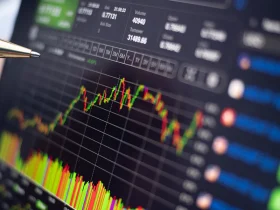Life is unpredictable. Emergencies can happen at any time, leaving us feeling vulnerable and helpless. Whether it’s a medical emergency, a sudden job loss, or a major home repair, having an emergency fund can help you weather the storm.

Why Build an Emergency Fund?
An emergency fund is a savings account that is specifically set aside for unexpected expenses. It’s important to have one because:
- It gives you peace of mind: Knowing that you have money set aside for emergencies can reduce stress and anxiety.
- It helps you avoid debt: Without an emergency fund, you may be forced to rely on credit cards or loans to cover unexpected expenses, which can lead to high-interest debt.
- It allows you to handle emergencies without disrupting your long-term financial goals: If you have to dip into your retirement savings or college fund to cover an emergency, it can set you back significantly.
How to Build an Emergency Fund
Building an emergency fund takes time and discipline, but it’s worth the effort. Here are some steps to get you started:
- Set a goal: Determine how much you need to save for emergencies. Most financial experts recommend saving three to six months’ worth of living expenses.
- Start small: You don’t have to save the full amount all at once. Start by setting aside a small amount each month and gradually increase it over time.
- Make it automatic: Set up an automatic transfer from your checking account to your emergency fund each month. This will help you stay consistent and avoid the temptation to spend the money elsewhere.
- Reduce expenses: Look for ways to cut back on expenses so you can save more. For example, you could cancel subscriptions you don’t use, eat out less, or reduce your energy consumption.
- Use windfalls: If you receive a bonus at work, a tax refund, or any other unexpected money, consider putting it towards your emergency fund.
Where to Keep Your Emergency Fund
It’s important to keep your emergency fund in a separate account from your regular savings or checking account. This will help you avoid the temptation to spend the money on non-emergency expenses. Here are some options:
- A high-yield savings account: This type of account typically offers higher interest rates than traditional savings accounts, which can help your emergency fund grow faster.
- A money market account: This type of account is similar to a savings account but offers higher interest rates and may have some checking account features, such as check-writing privileges.
- A short-term CD: A certificate of deposit (CD) is a type of savings account that offers higher interest rates than regular savings accounts. However, you will have to pay a penalty if you withdraw the money before the CD matures.
Building an emergency fund is an important part of financial planning. It can help you weather unexpected expenses without disrupting your long-term financial goals. By setting a goal, starting small, making it automatic, reducing expenses, and using windfalls, you can gradually build an emergency fund that will give you peace of mind and protect you from financial hardship.









